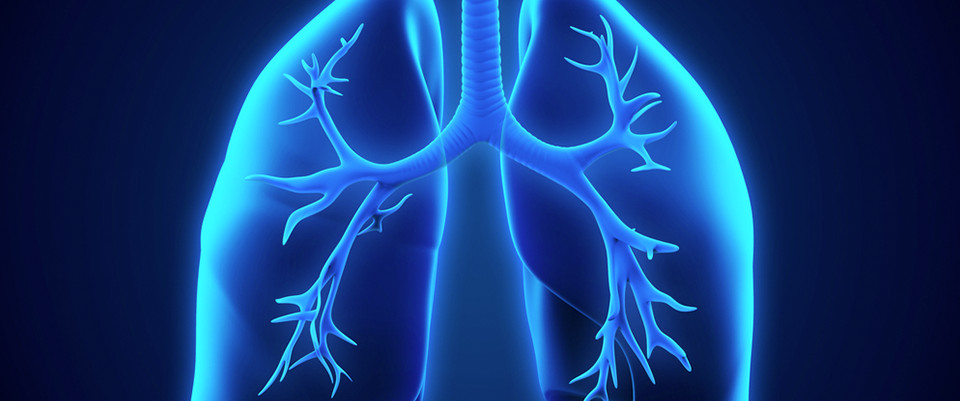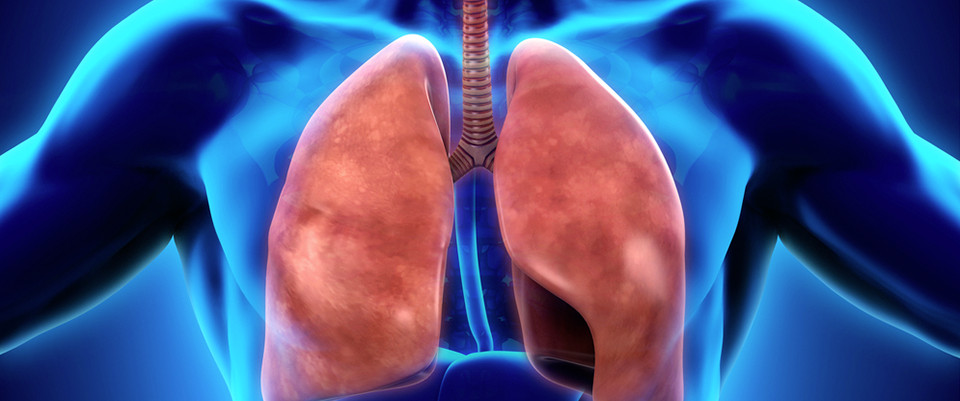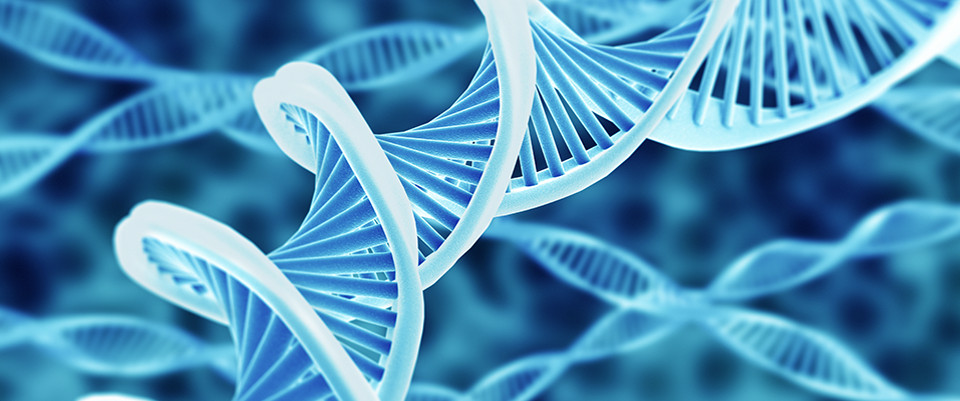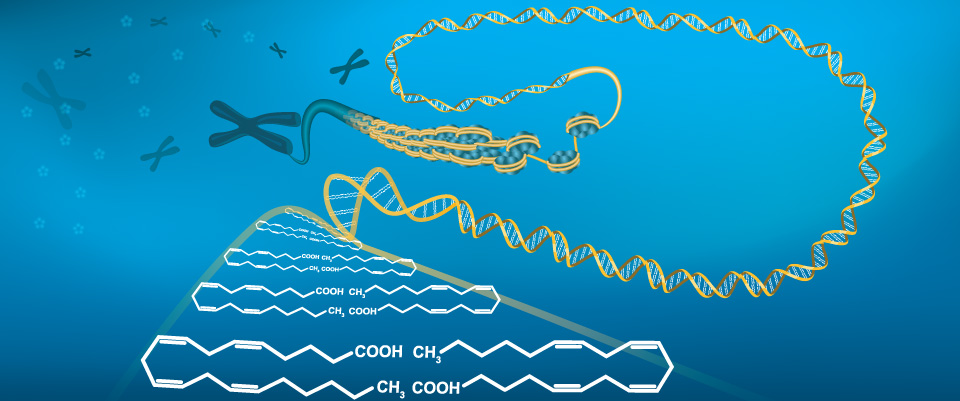PubMed
Liver functional metabolomics discloses an action of L-leucine against Streptococcus iniae infection in tilapias.
Related Articles
Liver functional metabolomics discloses an action of L-leucine against Streptococcus iniae infection in tilapias.
Fish Shellfish Immunol. 2015 May 6;
Authors: Ma YM, Yang MJ, Wang S, Li H, Peng XX
Abstract
Streptococcus iniae seriously affects the intensive farming of tilapias. Much work has been conducted on prevention and control of S. iniae infection, but little published information on the metabolic response is available in tilapias against the bacterial infection, and no metabolic modulation way may be adopted to control this disease. The present study used GC/MS based metabolomics to characterize the metabolic profiling of tilapias infected by a lethal dose (LD50) of S. iniae and determined two characteristic metabolomes separately responsible for the survival and dying fishes. A reversal changed metabolite, decreased and increased L-leucine in the dying and survival groups, respectively, was identified as a biomarker which featured the difference between the two metabolomes. More importantly, exogenous L-leucine could be used as a metabolic modulator to elevate survival ability of tilapias infected by S. iniae. These results indicate that tilapias mount metabolic strategies to deal with bacterial infection, which can be regulated by exogenous metabolites such as L-leucine. The present study establishes an alternative way, metabolic modulation, to cope with bacterial infections.
PMID: 25957884 [PubMed - as supplied by publisher]
Tissue-specific metabolite profiling of Turmeric by using laser micro-dissection, ultra-high performance liquid chromatography-quadrupole time of fight-mass spectrometry and liquid chromatography-tandem mass spectrometry.
Related Articles
Tissue-specific metabolite profiling of Turmeric by using laser micro-dissection, ultra-high performance liquid chromatography-quadrupole time of fight-mass spectrometry and liquid chromatography-tandem mass spectrometry.
Eur J Mass Spectrom (Chichester, Eng). 2014;20(5):383-93
Authors: Jaiswal Y, Liang Z, Ho A, Chen H, Zhao Z
Abstract
Curcuma longa L. is recognized for its therapeutic and culinary uses both in Ayurveda and traditional Chinese medicine and is considered to be a boon to mankind. It has been extensively studied for its benefits and still continues to be an important drug with continued potential for further exploration and research. We studied the tissue-specific distribution of secondary metabolites to establish the validity of the use of rhizome samples from India and China, as substitutes for each other, based upon their metabolite profiles and curcumin contents. Laser microdissection was used for the isolation of microscopic tissues, such as cork, cortex and leaf-trace vascular bundles from rhizomes. Metabolite profiling was carried out by ultra-high performance liquid chromatography-quadrupole time of fight-mass spectrometry and curcumin content was estimated by a method validated as per the Harmonized Tripartite Guidelines. The cortex and cork revealed the presence of a higher number of secondary metabolites than in the leaf-trace vascular bundles. The curcumin contents in rhizome samples from both the countries, estimated with the help of a precise and accurate validated method, were found to be comparable. Based on the results, we conclude that turmeric rhizomes grown in India and China are qualitatively and quantitatively indistinguishable and therefore can be used as substitutes. The developed method can be widely applied for microscopic identification, authentication and analysis of the distribution of phytoconstituents in other botanical species of interest or of species with a significant commercial and therapeutic value.
PMID: 25707128 [PubMed - indexed for MEDLINE]
metabolomics; +24 new citations
24 new pubmed citations were retrieved for your search.
Click on the search hyperlink below to display the complete search results:
metabolomics
These pubmed results were generated on 2015/05/06PubMed comprises more than 24 million citations for biomedical literature from MEDLINE, life science journals, and online books.
Citations may include links to full-text content from PubMed Central and publisher web sites.
A cleavable cytolysin-neuropeptide Y bioconjugate enables specific drug delivery and demonstrates intracellular mode of action.
A cleavable cytolysin-neuropeptide Y bioconjugate enables specific drug delivery and demonstrates intracellular mode of action.
J Control Release. 2015 Apr 29;
Authors: Ahrens VM, Kostelnik KB, Rennert R, Böhme D, Kalkhof S, Kosel D, Weber L, von Bergen M, Beck-Sickinger AG
Abstract
Myxobacterial tubulysins are promising chemotherapeutics inhibiting microtubule polymerization, however, high unspecific toxicity so far prevents their application in therapy. For selective cancer cell targeting, here the coupling of a synthetic cytolysin to the hY1-receptor preferring peptide [F(7),P(34)]-neuropeptide Y (NPY) using a labile disulfide linker is described. Since hY1-receptors are overexpressed in breast tumors and internalize rapidly, this system has high potential as peptide-drug shuttle system. Molecular characterization of the cytolysin-[F(7),P(34)]-NPY bioconjugate revealed potent receptor activation and receptor-selective internalization, while viability studies verified toxicity. Triple SILAC studies comparing free cytolysin with the bioconjugate demonstrated an intracellular mechanism of action regardless of the delivery pathway. Treatments resulted in a regulation of proteins implemented in cell cycle arrest confirming the tubulysin-like effect of the cytolysin. Thus, the cytolysin-peptide bioconjugate fused by a cleavable linker enables a receptor-specific delivery as well as a potent intracellular drug-release with high cytotoxic activity.
PMID: 25935706 [PubMed - as supplied by publisher]
Human sweat metabolomics for lung cancer screening.
Human sweat metabolomics for lung cancer screening.
Anal Bioanal Chem. 2015 May 3;
Authors: Calderón-Santiago M, Priego-Capote F, Turck N, Robin X, Jurado-Gámez B, Sanchez JC, Luque de Castro MD
Abstract
Sweat is one of the less employed biofluids for discovery of markers in spite of its increased application in medicine for detection of drugs or for diagnostic of cystic fibrosis. In this research, human sweat was used as clinical sample to develop a screening tool for lung cancer, which is the carcinogenic disease with the highest mortality rate owing to the advanced stage at which it is usually detected. In this context, a method based on the metabolite analysis of sweat to discriminate between patients with lung cancer versus smokers as control individuals is proposed. The capability of the metabolites identified in sweat to discriminate between both groups of individuals was studied and, among them, a trisaccharide phosphate presented the best independent performance in terms of the specificity/sensitivity pair (80 and 72.7 %, respectively). Additionally, two panels of metabolites were configured using the PanelomiX tool as an attempt to reduce false negatives (at least 80 % specificity) and false positives (at least 80 % sensitivity). The first panel (80 % specificity and 69 % sensitivity) was composed by suberic acid, a tetrahexose, and a trihexose, while the second panel (69 % specificity and 80 % sensitivity) included nonanedioic acid, a trihexose, and the monoglyceride MG(22:2). Thus, the combination of the five metabolites led to a single panel providing 80 % specificity and 79 % sensitivity, reducing the false positive and negative rates to almost 20 %. The method was validated by estimation of within-day and between-days variability of the quantitative analysis of the five metabolites.
PMID: 25935675 [PubMed - as supplied by publisher]
Ethanol contamination of cerebrospinal fluid during standardized sampling and its effect on (1)H-NMR metabolomics.
Ethanol contamination of cerebrospinal fluid during standardized sampling and its effect on (1)H-NMR metabolomics.
Anal Bioanal Chem. 2015 May 3;
Authors: van der Sar SA, Zielman R, Terwindt GM, van den Maagdenberg AM, Deelder AM, Mayboroda OA, Meissner A, Ferrari MD
Abstract
Standardization of body fluid sampling, processing and storage procedures is pivotal to ensure data quality in metabolomics studies. Yet, despite strict adherence to standard sampling guidelines, we detected variable levels of ethanol in the (1)H-NMR spectra of human cerebrospinal fluid (CSF) samples (range 9.2 × 10(-3)-10.0 mM). The presence of ethanol in all samples and the wide range of concentrations clearly indicated contamination of the samples of some sort, which affected the (1)H-NMR spectra quality and the interpretation. To determine where in the sampling protocol the ethanol contamination occurs, we performed a CSF sampling protocol simulation with 0.9 % NaCl (saline) instead of CSF and detected ethanol in all simulation samples. Ethanol diffusion through air during sampling and preparation stages appeared the only logical explanation. With a bench study, we showed that ethanol easily diffuses into ex vivo CSF samples via air transmission. Ethanol originated from routinely used skin disinfectants containing ethanol and from laboratory procedures. Ethanol affected the CSF sample matrix at concentrations above ~9.4 mM and obscured a significant part of the (1)H-NMR spectrum. CSF sample preparation for (1)H-NMR-based metabolomics analyses should therefore be carried out in a well-ventilated atmosphere with laminar flow, and use of ethanol should be avoided.
PMID: 25935669 [PubMed - as supplied by publisher]
Metabolic profiling of chickpea-Fusarium interaction identifies differential modulation of disease resistance pathways.
Metabolic profiling of chickpea-Fusarium interaction identifies differential modulation of disease resistance pathways.
Phytochemistry. 2015 Apr 29;
Authors: Kumar Y, Dholakia BB, Panigrahi P, Kadoo NY, Giri AP, Gupta VS
Abstract
Chickpea is the third most widely grown legume in the world and mainly used as a vegetarian source of human dietary protein. Fusarium wilt, caused by Fusarium oxysporum f. sp. ciceri (Foc), is one of the major threats to global chickpea production. Host resistance is the best way to protect crops from diseases; however, in spite of using various approaches, the mechanism of Foc resistance in chickpea remains largely obscure. In the present study, non-targeted metabolic profiling at several time points of resistant and susceptible chickpea cultivars using high-resolution liquid chromatography-mass spectrometry was applied to better understand the mechanistic basis of wilt resistance or susceptibility. Multivariate analysis of the data (OPLS-DA) revealed discriminating metabolites in chickpea root tissue after Foc inoculation such as flavonoids, isoflavonoids, alkaloids, amino acids and sugars. Foc inoculated resistant plants had more flavonoids and isoflavonoids along with their malonyl conjugates. Many antifungal metabolites that were induced after Foc infection viz., aurantion-obstine β-glucosides and querecitin were elevated in resistant cultivar. Overall, diverse genetic and biochemical mechanisms were operational in the resistant cultivar for Foc defense as compared to the susceptible plant. The resistant chickpea plants employed the above-mentioned metabolic pathways as potential defense strategy against Foc.
PMID: 25935544 [PubMed - as supplied by publisher]
Day-3 embryo metabolomics in the spent culture media is altered in obese women undergoing in vitro fertilization.
Day-3 embryo metabolomics in the spent culture media is altered in obese women undergoing in vitro fertilization.
Fertil Steril. 2015 Apr 29;
Authors: Bellver J, De Los Santos MJ, Alamá P, Castelló D, Privitera L, Galliano D, Labarta E, Vidal C, Pellicer A, Domínguez F
Abstract
OBJECTIVE: To determine whether the global metabolomic profile of the spent culture media (SCM) of day-3 embryos is different in obese and normoweight women undergoing in vitro fertilization (IVF).
DESIGN: Prospective cohort analysis.
SETTING: IVF clinic.
PATIENT(S): Twenty-eight young, nonsmoking women with normoweight, nonsmoking male partners with mild/normal sperm factors undergoing a first IVF attempt for idiopathic infertility, tubal factor infertility, or failed ovulation induction: obese ovulatory women (n = 12); obese women with polycystic ovary syndrome (PCOS; n = 4); normoweight ovulatory women (n = 12).
INTERVENTION(S): Fifty μl of SCM collected from two day-3 embryos of each cohort.
MAIN OUTCOME MEASURE(S): Metabolomic profiling via ultrahigh performance liquid chromatography coupled to mass spectrometry of SCM from a total of 56 embryos.
RESULT(S): The untargeted metabolomic profile was different in obese and normoweight women. Partial least squares discriminant analysis resulted in a clear separation of samples when a total of 551 differential metabolites were considered. A prediction model was generated using the most consistent metabolites. Most of the metabolites identified were saturated fatty acids, which were detected in lower concentrations in the SCM of embryos from obese women. The metabolomic profile was similar in obese women with or without PCOS.
CONCLUSION(S): The metabolomic profile in the SCM of day-3 embryos is different in normoweight and obese women. Saturated fatty acids seem to be reduced when embryos from obese patients are present.
CLINICAL TRIAL REGISTRATION NUMBER: NCT01448863.
PMID: 25935493 [PubMed - as supplied by publisher]
Perinatal protein restriction affects milk free amino acid and fatty acid profile in lactating rats: potential role on pup growth and metabolic status.
Perinatal protein restriction affects milk free amino acid and fatty acid profile in lactating rats: potential role on pup growth and metabolic status.
J Nutr Biochem. 2015 Apr 13;
Authors: Martin Agnoux A, Antignac JP, Boquien CY, David A, Desnots E, Ferchaud-Roucher V, Darmaun D, Parnet P, Alexandre-Gouabau MC
Abstract
Perinatal undernutrition affects not only fetal and neonatal growth but also adult health outcome, as suggested by the metabolic imprinting concept. Although maternal milk is the only channel through which nutrients are transferred from mother to offspring during the postnatal period, the impact of maternal undernutrition on milk composition is poorly understood. The present study investigates, in a rat model of nutritional programming, the effects of feeding an isocaloric, low-protein diet throughout gestation and lactation on milk composition and its possible consequences on offspring's growth and metabolic status. We used an integrated methodological approach that combined targeted analyses of macronutrients, free amino acid and fatty acid content throughout lactation, with an untargeted mass-spectrometric-based metabolomic phenotyping. Whereas perinatal dietary protein restriction failed to alter milk protein content, it dramatically decreased the concentration of most free amino acids at the end of lactation. Interestingly, a decrease of several amino acids involved in insulin secretion or gluconeogenesis was observed, suggesting that maternal protein restriction during the perinatal period may impact the insulinotrophic effect of milk, which may, in turn, account for the slower growth of the suckled male offspring. Besides, the decrease in sulfur amino acids may alter redox status in the offspring. Maternal undernutrition was also associated with an increase in milk total fatty acid content, with modifications in their pattern. Altogether, our results show that milk composition is clearly influenced by maternal diet and suggest that alterations in milk composition may play a role in offspring growth and metabolic programming.
PMID: 25935308 [PubMed - as supplied by publisher]
The Mouse Brain Metabolome: Region-Specific Signatures and Response to Excitotoxic Neuronal Injury.
Related Articles
The Mouse Brain Metabolome: Region-Specific Signatures and Response to Excitotoxic Neuronal Injury.
Am J Pathol. 2015 Apr 24;
Authors: Jaeger C, Glaab E, Michelucci A, Binz TM, Koeglsberger S, Garcia P, Trezzi JP, Ghelfi J, Balling R, Buttini M
Abstract
Neurodegeneration is a multistep process characterized by a multitude of molecular entities and their interactions. Systems' analyses, or omics approaches, have become an important tool in characterizing this process. Although RNA and protein profiling made their entry into this field a couple of decades ago, metabolite profiling is a more recent addition. The metabolome represents a large part or all metabolites in a tissue, and gives a snapshot of its physiology. By using gas chromatography coupled to mass spectrometry, we analyzed the metabolic profile of brain regions of the mouse, and found that each region is characterized by its own metabolic signature. We then analyzed the metabolic profile of the mouse brain after excitotoxic injury, a mechanism of neurodegeneration implicated in numerous neurological diseases. More important, we validated our findings by measuring, histologically and molecularly, actual neurodegeneration and glial response. We found that a specific global metabolic signature, best revealed by machine learning algorithms, rather than individual metabolites, was the most robust correlate of neuronal injury and the accompanying gliosis, and this signature could serve as a global biomarker for neurodegeneration. We also observed that brain lesioning induced several metabolites with neuroprotective properties. Our results deepen the understanding of metabolic changes accompanying neurodegeneration in disease models, and could help rapidly evaluate these changes in preclinical drug studies.
PMID: 25934215 [PubMed - as supplied by publisher]
Toward Omics-Based, Systems Biomedicine, and Path and Drug Discovery Methodologies for Depression-Inflammation Research.
Related Articles
Toward Omics-Based, Systems Biomedicine, and Path and Drug Discovery Methodologies for Depression-Inflammation Research.
Mol Neurobiol. 2015 May 2;
Authors: Maes M, Nowak G, Caso JR, Leza JC, Song C, Kubera M, Klein H, Galecki P, Noto C, Glaab E, Balling R, Berk M
Abstract
Meta-analyses confirm that depression is accompanied by signs of inflammation including increased levels of acute phase proteins, e.g., C-reactive protein, and pro-inflammatory cytokines, e.g., interleukin-6. Supporting the translational significance of this, a meta-analysis showed that anti-inflammatory drugs may have antidepressant effects. Here, we argue that inflammation and depression research needs to get onto a new track. Firstly, the choice of inflammatory biomarkers in depression research was often too selective and did not consider the broader pathways. Secondly, although mild inflammatory responses are present in depression, other immune-related pathways cannot be disregarded as new drug targets, e.g., activation of cell-mediated immunity, oxidative and nitrosative stress (O&NS) pathways, autoimmune responses, bacterial translocation, and activation of the toll-like receptor and neuroprogressive pathways. Thirdly, anti-inflammatory treatments are sometimes used without full understanding of their effects on the broader pathways underpinning depression. Since many of the activated immune-inflammatory pathways in depression actually confer protection against an overzealous inflammatory response, targeting these pathways may result in unpredictable and unwanted results. Furthermore, this paper discusses the required improvements in research strategy, i.e., path and drug discovery processes, omics-based techniques, and systems biomedicine methodologies. Firstly, novel methods should be employed to examine the intracellular networks that control and modulate the immune, O&NS and neuroprogressive pathways using omics-based assays, including genomics, transcriptomics, proteomics, metabolomics, epigenomics, immunoproteomics and metagenomics. Secondly, systems biomedicine analyses are essential to unravel the complex interactions between these cellular networks, pathways, and the multifactorial trigger factors and to delineate new drug targets in the cellular networks or pathways. Drug discovery processes should delineate new drugs targeting the intracellular networks and immune-related pathways.
PMID: 25934103 [PubMed - as supplied by publisher]
Multiwalled Carbon Nanotubes Dispersion Methods Affect Their Aggregation, Deposition, and Biomarker Response.
Multiwalled Carbon Nanotubes Dispersion Methods Affect Their Aggregation, Deposition, and Biomarker Response.
Environ Sci Technol. 2015 Apr 29;
Authors: Chang X, Henderson WM, Bouchard DC
Abstract
To systematically evaluate how dispersion methods affect multi-walled carbon nanotubes (MWNTs) environmental behaviors, MWNTs were dispersed in various solutions [e.g., surfactants, natural organic matter (NOM), and etc.] via ultrasonication (SON) and long-term stirring (LT). The two tested surfactants [anionic sodium dodecyl sulfate (SDS) and nonionic poly(ethylene glycol)-poly(propylene glycol)-poly(ethylene glycol) (PEO-PPO-PEO) triblock copolymers (Pluronic)] could only disperse MWNTs via ultrasonication; while stable aqueous SON/MWNT and LT/MWNTs suspensions were formed in the presence of the two model NOMs [Suwannee river humic acid (SRHA) and fulvic acid (SRFA)]. Due to the inherent stochastic nature for both methods, the formed MWNTs suspensions were highly heterogeneous. Their physicochemical properties, including surface charge, size, and morphology, greatly depended upon the dispersant type and concentration but were not very sensitive to the preparation methods. Homo-aggregation and hetero-aggregation behaviors of the dispersed MWNTs were controlled by van der Waal and electrostatic forces, as well as other non-DLVO forces (e.g., steric, hydrophobic forces, etc.). Unlike the preparation method-independent physicochemical properties, LT/NOM-MWNTs and SON/NOM-MWNTs differed in their fathead minnow epithelial cell metabolomics profiles.
PMID: 25924000 [PubMed - as supplied by publisher]
Distinct serum metabolomics profiles associated with malignant progression in the KrasG12D mouse model of pancreatic ductal adenocarcinoma.
Distinct serum metabolomics profiles associated with malignant progression in the KrasG12D mouse model of pancreatic ductal adenocarcinoma.
BMC Genomics. 2015 Jan 15;16(Suppl 1):S1
Authors: LaConti JJ, Laiakis EC, Mays A, Peran I, Kim S, Shay JW, Riegel AT, Fornace AJ, Wellstein A
Abstract
BACKGROUND: Pancreatic ductal adenocarcinoma (PDAC) is the fourth leading cause of cancer deaths worldwide with less than a 6% 5-year survival rate. PDAC is associated with poor prognosis based on the late stage diagnosis of the disease. Current diagnostic tests lack the sensitivity and specificity to identify markers of early staging. Metabolomics has provided biomarkers for various diseases, stressors, and environmental exposures. In this study we utilized the p48-Cre/LSL-KrasG12D mouse model with age-matched wild type mice. This model shows malignant progression to PDAC analogous to the human disease stages via early and late pancreatic intra-epithelial neoplasia (PanIN) lesions.
RESULTS: Serum was collected from mice with early PanIN lesions (at 3-5 months) and with late PanIN or invasive PDAC lesions (13-16 months), as determined by histopathology. Metabolomics analysis of the serum samples was conducted through UPLC-TOFMS (Ultra Performance Liquid Chromatography coupled to Time-of-flight Mass Spectrometry). Multivariate data analysis revealed distinct metabolic patterns in serum samples collected during malignant progression towards invasive PDAC. Animals with early or late stage lesions were distinguished from their respective controls with 82.1% and 81.5% accuracy, respectively. This also held up for randomly selected subgroups in the late stage lesion group that showed less variability between animals. One of the metabolites, citrate, was validated through tandem mass spectrometry and showed increased levels in serum with disease progression. Furthermore, serum metabolite signatures from animals with early stage lesions identified controls and animals with late stage lesions with 81.5% accuracy (p<0.01) and vice-versa with 73.2% accuracy (p<0.01).
CONCLUSIONS: We conclude that metabolomics analysis of serum samples can identify the presence of early and late stage pancreatic cancer.
PMID: 25923219 [PubMed - as supplied by publisher]
Top-down Targeted Metabolomics Reveals a Sulfur-Containing Metabolite with Inhibitory Activity against Angiotensin-Converting Enzyme in Asparagus officinalis.
Top-down Targeted Metabolomics Reveals a Sulfur-Containing Metabolite with Inhibitory Activity against Angiotensin-Converting Enzyme in Asparagus officinalis.
J Nat Prod. 2015 Apr 29;
Authors: Nakabayashi R, Yang Z, Nishizawa T, Mori T, Saito K
Abstract
The discovery of bioactive natural compounds containing sulfur, which is crucial for inhibitory activity against angiotensin-converting enzyme (ACE), is a challenging task in metabolomics. Herein, a new S-containing metabolite, asparaptine (1), was discovered in the spears of Asparagus officinalis by targeted metabolomics using mass spectrometry for S-containing metabolites. The contribution ratio (2.2%) to the IC50 value in the crude extract showed that asparaptine (1) is a new ACE inhibitor.
PMID: 25922884 [PubMed - as supplied by publisher]
Paucimannosidic glycoepitopes are functionally involved in proliferation of neural progenitor cells in the subventricular zone.
Paucimannosidic glycoepitopes are functionally involved in proliferation of neural progenitor cells in the subventricular zone.
Glycobiology. 2015 Apr 28;
Authors: Dahmen AC, Fergen MT, Laurini C, Schmitz B, Loke I, Thaysen-Andersen M, Diestel S
Abstract
Protein glycosylation has received much attention due to its multiple functional roles in physiological and pathophysiological conditions. Paucimannose is a common mannosidic N-glycoepitope in invertebrates and plants but has only recently been detected in vertebrates. Herein, we demonstrate the presence of paucimannosidic epitopes specifically in early postnatal neural progenitor cells between postnatal day 0 and 7 in mouse brain suggesting a possible role in the development of neural progenitor cells. Paucimannosidic epitopes were also detected in human glioblastoma cells and human macrophages by immunofluorescence and mass spectrometric analysis. Its expression was significantly increased after proliferation arrest indicating its importance in regulation of cell proliferation. This hypothesis was further strengthened by reduced cell proliferation after application of paucimannose-reactive Mannitou antibody into culture medium of growing cells. Most interestingly, this reduction of cell proliferation upon administration of Mannitou antibody could also be observed in vivo in the subventricular zone of early postnatal mouse brain. Taken together, these observations demonstrate that paucimannosylation directly influences cell proliferation in various vertebrate cell types including early postnatal neural stem cells.
PMID: 25922361 [PubMed - as supplied by publisher]
Maternal obesity characterized by gestational diabetes increases the susceptibility of rat offspring to hepatic steatosis via a disrupted liver metabolome.
Maternal obesity characterized by gestational diabetes increases the susceptibility of rat offspring to hepatic steatosis via a disrupted liver metabolome.
J Physiol. 2015 Apr 29;
Authors: Pereira TJ, Fonseca MA, Campbell KE, Moyce BL, Cole LK, Hatch GM, Doucette CA, Klein J, Aliani M, Dolinsky VW
Abstract
Maternal obesity is associated with a high risk for gestational diabetes mellitus (GDM), which is a common complication of pregnancy. The influence of maternal obesity and GDM on the metabolic health of the offspring is poorly understood. We hypothesize that GDM associated with maternal obesity will cause obesity, insulin resistance and hepatic steatosis in the offspring. Female Sprague-Dawley rats were fed a high-fat (45%) and sucrose (HFS) diet to cause maternal obesity and GDM. Lean control pregnant rats received low-fat (LF; 10%) diets. To investigate the interaction between the prenatal environment and postnatal diets, rat offspring were assigned to LF or HFS diets for 12 weeks and insulin sensitivity and hepatic steatosis were evaluated. Pregnant GDM dams exhibited excessive gestational weight gain, hyperinsulinemia and hyperglycemia. Offspring of GDM dams gained more weight than the offspring of lean dams due to excess adiposity. The offspring of GDM dams also developed hepatic steatosis and insulin resistance. The postnatal consumption of a LF diet did not protect offspring of GDM dams against these metabolic disorders. Analysis of the hepatic metabolome revealed increased diacylglycerol and reduced phosphatidylethanolamine in the offspring of GDM dams compared to offspring of lean dams. Consistent with altered lipid metabolism, the expression of CTP:phosphoethanolamine cytidylyltransferase, and peroxisomal proliferator activated receptor-α mRNA was reduced in the livers of GDM offspring. GDM exposure programs gene expression and hepatic metabolite levels and drives the development of hepatic steatosis and insulin resistance in young adult rat offspring. This article is protected by copyright. All rights reserved.
PMID: 25922055 [PubMed - as supplied by publisher]
The 'prime-ome': towards a holistic approach to priming.
The 'prime-ome': towards a holistic approach to priming.
Trends Plant Sci. 2015 Apr 25;
Authors: Balmer A, Pastor V, Gamir J, Flors V, Mauch-Mani B
Abstract
Plants can be primed to respond faster and more strongly to stress and multiple pathways, specific for the encountered challenge, are involved in priming. This adaptability of priming makes it difficult to pinpoint an exact mechanism: the same phenotypic observation might be the consequence of unrelated underlying events. Recently, details of the molecular aspects of establishing a primed state and its transfer to offspring have come to light. Advances in techniques for detection and quantification of elements spanning the fields of transcriptomics, proteomics, and metabolomics, together with adequate bioinformatics tools, will soon allow us to take a holistic approach to plant defence. This review highlights the state of the art of new strategies to study defence priming in plants and provides perspectives towards 'prime-omics'.
PMID: 25921921 [PubMed - as supplied by publisher]
Dynamic phosphoproteomics reveals TORC1-dependent regulation of yeast nucleotide and amino acid biosynthesis.
Dynamic phosphoproteomics reveals TORC1-dependent regulation of yeast nucleotide and amino acid biosynthesis.
Sci Signal. 2015;8(374):rs4
Authors: Oliveira AP, Ludwig C, Zampieri M, Weisser H, Aebersold R, Sauer U
Abstract
Phosphoproteomics studies have unraveled the extent of protein phosphorylation as a key cellular regulation mechanism, but assigning functionality to specific phosphorylation events remains a major challenge. TORC1 (target of rapamycin complex 1) is a kinase-containing protein complex that transduces changes in nutrient availability into phosphorylation signaling events that alter cell growth and proliferation. To resolve the temporal sequence of phosphorylation responses to nutritionally and chemically induced changes in TORC1 signaling and to identify previously unknown kinase-substrate relationships in Saccharomyces cerevisiae, we performed quantitative mass spectrometry-based phosphoproteomic analyses after shifts in nitrogen sources and rapamycin treatment. From early phosphorylation events that were consistent over at least two experimental perturbations, we identified 51 candidate and 10 known proximal targets of TORC1 that were direct substrates of TORC1 or of one of its kinase or phosphatase substrates. By correlating these phosphoproteomics data with dynamic metabolomics data, we inferred the functional role of phosphorylation on the metabolic activity of 12 enzymes, including three candidate TORC1-proximal targets: Amd1, which is involved in nucleotide metabolism; Hom3, which is involved in amino acid metabolism; and Tsl1, which mediates carbohydrate storage. Finally, we identified the TORC1 substrates Sch9 and Atg1 as candidate kinases that phosphorylate Amd1 and Hom3, respectively.
PMID: 25921291 [PubMed - in process]
Deoxycytidine-kinase (dCK) knock-down as a novel myeloprotective strategy in the context of fludarabine, cytarabine, or cladribine therapy.
Deoxycytidine-kinase (dCK) knock-down as a novel myeloprotective strategy in the context of fludarabine, cytarabine, or cladribine therapy.
Leukemia. 2015 Apr 29;
Authors: Lachmann N, Czarnecki K, Brennig S, Phaltane R, Heise M, Heinz N, Kempf H, Dilloo D, Kaever V, Schambach A, Heuser M, Moritz T
PMID: 25921248 [PubMed - as supplied by publisher]
Technical brief funrich: An open access standalone functional enrichment and interaction network analysis tool.
Technical brief funrich: An open access standalone functional enrichment and interaction network analysis tool.
Proteomics. 2015 Apr 29;
Authors: Pathan M, Keerthikumar S, Ang CS, Gangoda L, Quek CY, Williamson NA, Mouradov D, Sieber OM, Simpson RJ, Salim A, Bacic A, Hill A, Stroud DA, Ryan MT, Agbinya JI, Mariadasson JM, Burgess AW, Mathivanan S
Abstract
As high-throughput techniques including proteomics become more accessible to individual laboratories, there is an urgent need for a user-friendly bioinformatics analysis system. Here, we describe FunRich, an open access, standalone functional enrichment and network analysis tool. FunRich is designed to be used by biologists with minimal or no support from computational and database experts. Using FunRich, users can perform functional enrichment analysis on background databases that are integrated from heterogeneous genomic and proteomic resources (>1.5 million annotations). Besides default human specific FunRich database, users can download data from the UniProt database which currently supports 20 different taxonomies against which enrichment analysis can be performed. Moreover, the users can build their own custom databases and perform the enrichment analysis irrespective of organism. In addition to proteomics datasets, the custom database allows for the tool to be used for genomics, lipidomics and metabolomics datasets. Thus FunRich allows for complete database customization and thereby permits for the tool to be exploited as a skeleton for enrichment analysis irrespective of the data type or organism used. FunRich is user-friendly and provides graphical representation (Venn, pie charts, bar graphs, column, heatmap and doughnuts) of the data with customizable font, scale and color (publication quality) This article is protected by copyright. All rights reserved.
PMID: 25921073 [PubMed - as supplied by publisher]











